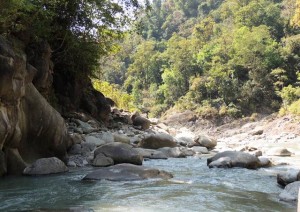Reserves like Manas in Assam, Palamu in Jharkhand, Satkosia in Orissa and Udanti-Sitanadi in Chhattisgarh. They are tiger reserves too… though not as celebrated as those closer to power centres. Here, tigers are not an easy photo-capture, nor an easy ‘sighting.’, and in some their numbers have been questioned. But, they are part of vast, high potential tiger landscapes, significant fragments of just two percent of tiger habitat that remains in the country and harbour other rare species. Yet, they struggle with acute shortage of manpower, uninterested governments…a few are under siege of insurgency, and saddled with dispirited leadership. So will we write them off? Because it is easier to shrug off responsibility? Or will we take them on as a challenge, and turn them around, making them examples like NSTR which has clawed its way back to recovery or Panna which shed the shame of local extinction to nurture a ‘new’ tiger population, even feeding tigers to other reserves today?
The choice is ours to make. I hope we will have the wisdom and the vision to conserve, rather than allow deterioration and death by apathy.






